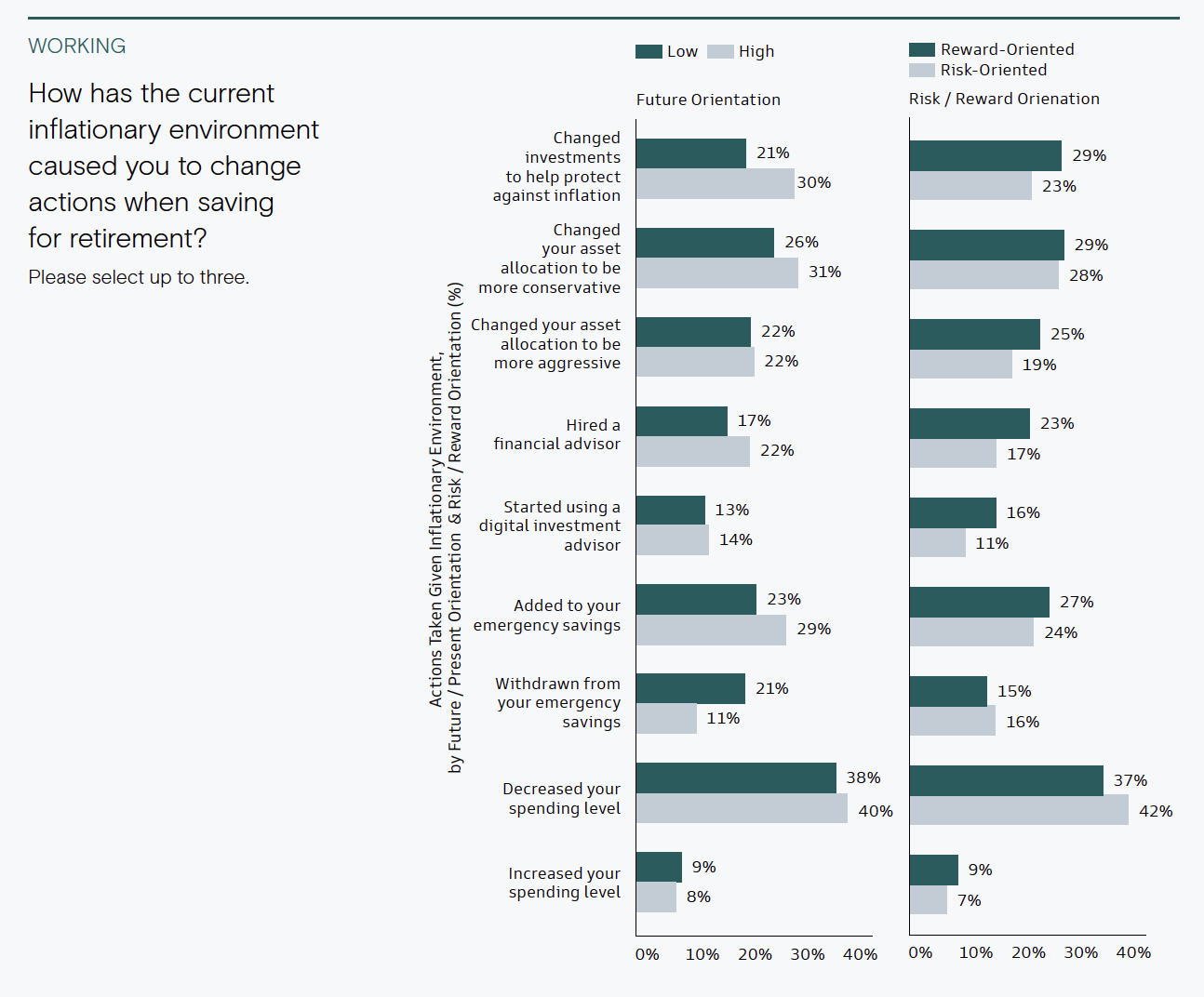As Women's History Month draws to a close, a new Goldman Sachs report found that more than a quarter of women (28%) are saving less than $50,000 for retirement.
“Assuming a 4% withdrawal rate, $50,000 in retirement savings provides $2,000 in income per year,” the report's authors noted. “At these levels, Social Security benefits are an essential part of a retirement income strategy. However, according to the Social Security Administration, women receive an average of 22% less in Social Security benefits, driven in part by wage gaps and part-time work.”
In an addition to it 2023 Retirement Survey and Insights Report CALLED Challenges faced by women saving for retirement, Goldman Sachs Asset Management looked at data from 5,261 respondents surveyed by gender, age and employment status. Approximately 30% had retired at the time of the July survey.
In addition to losing more Social Security income due to factors often related to caregiving, women also tend to retire earlier than planned and for more unexpected reasons. Combined with persistent income disparities, women are retiring with anywhere from 24% (according to Goldman) to 30% (according to Tina Sanchez, head of national retirement accounts for BlackRock) less saved than the other 49.49% of men. US population.
“The recent market environment has been difficult for everyone, but it's important that we recognize that women, and especially women of color, have been hit the hardest,” Sanchez said during a recent webinar, hosted by Vestwell, discussing women and retirement.
“We refer to it as the triple whammy,” she said. “It's the wage gap: on average, women still earn less than men; it's about 83 cents on the dollar now. It's employment gaps: women are often disproportionately the caregivers who take time out of the workforce to care for loved ones. And there's life expectancy: we know that women live an average of five years longer than men.
Despite these challenges, the Goldman report found improvements in working women's retirement outlook, including reduced stress in managing savings, increased confidence and more savings over the past year.
The study also delved into how gender-based differences can affect investment priorities, preferences and market reactions.
Working women are still more likely to feel they are not saving enough for retirement; 43% feel they are behind the schedule, while just over a fifth feel they are ahead. By comparison, 37% of working men feel they are ahead and three in ten want to achieve.
However, women reported feeling more comfortable with their savings than a year ago. Only half said managing their retirement savings is stressful, down from 63% a year ago and compared to 42% of their male counterparts.
“Of course, while it is important to see the positive development, it is still significant that half of the women surveyed report feeling stressed managing their savings,” the report's authors noted.
Women also reported that the struggle to balance multiple financial goals, dubbed the “financial vortex” by GSAM, was having less of an impact on their retirement plan in 2023 than last year. Including things like credit card debt, saving for college, supporting family members, high monthly expenses and unexpected costs, women were feeling better across the board — a trend that was reversed among men.
According to the analysis, this shows that women may be more present-oriented and risk-averse, while men are more reward-oriented and future-focused, characteristics that can have a significant impact on investment choices. in different market environments.

Click to enlarge
“This underscores the deeply personal nature of financial goals and the utility of periodically accessing calculators and tools to assess retirement readiness and increase confidence,” according to GSAM Senior Retirement Strategist Chris Ceder. “Planning assumptions must be evaluated along with each individual's vision for retirement.”
Speaking with Vestwell, BlackRock's Sanchez and Bonnie Treichel, founder of Endeavor Retirement, emphasized the need for greater access to education and financial resources to help women retire more securely. Sanchez recommended a combination of active investment management strategies and target date funds to help overcome the behavioral challenge while potentially earning better returns.
“If women feel like they're saving less, they should definitely consider active management strategies to help offset the lack of savings by providing more alpha,” Sanchez said. “And with target date funds, the investment behavior of women is super encouraging. We see women investing for the long term.”
Treichel and Tali Vaughn, regional vice president of sales and consulting for retirement plan administrator EGPS, both suggested that personalized planning can help address some of the unique challenges women face due to living longer and keeping of the main burden of family care. They noted that proactive advice about Secure 2.0 provisions related to part-time, freelance and gig economy workers, emergency savings programs and student loan debt could be particularly helpful for women.
Ultimately, GSAM research found that roughly three-quarters of retired women and two-thirds of retired men live on less than 70% of their earnings. About a third of women are dissatisfied with this, compared to a fifth of men.
“We need to talk more about our finances and articulate our priorities,” said Vestwell's Kim Andranovich, citing a recent Forbes article by Jamie Hopkins. “The balance of wealth is changing and as a result of living longer, women will be the main holders of wealth probably within the next decade.
“So it's absolutely important.”

